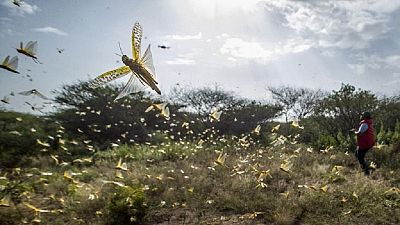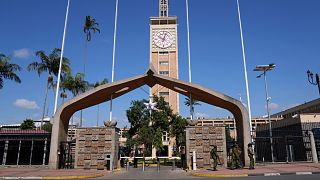Kenya
Desert locusts continue to threaten Kenya’s food supply after invading the north-western part of the country by the millions.
The Food and Agriculture Organization of the United Nations works with Kenyan logisticians to search for and monitor dense areas of locust invasions in the country’s desert.
Among them, Boris Polo and his team are using GPS data to spray blocks long before they are ripe enough to fly or lay eggs.
“So the issue, without doing control of locusts now is basically they will form big swarms and have the risk of going into the bread baskets of Kenya in the south and that will affect food production for the populations and the future of Kenya,” Polo said.
At this stage of their evolution, locusts are easier to control. They do not yet have the capacity to travel the usual 20 km per day and at the same time devastate everything green, the main source of food for livestock.
Farmers in southern Kenya are apprehensive about the outcome of this year’s harvest.
“These infestations are pretty serious. Kenya (in) 2020 has suffered already quite a lot with floods, of course COVID-19 and now the desert locust infestations that we seem to be finding everywhere”, he added.
Described as a scourge for humanity, locusts devastate crops and livestock and threaten the food security of more than 5 million people in Kenya, Somalia and Ethiopia.
AP













Go to video
Eliud Kipchoge returns to the London Marathon
Go to video
Kenya: Ant smuggling suspects set to be sentenced on May 7
01:16
Africa mourns Pope Francis, a voice for peace and justice
Go to video
Kenyan runners win both male and female races at Boston Marathon 2025
Go to video
Smart Justice: Kenya’s legal system embraces AI in a rapid digital shift
Go to video
Letsile Tebogo shines at FNB Golden Prix ahead of 2025 World Championships